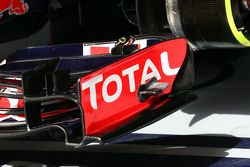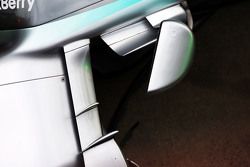How ‘spec’ can F1 afford to be?
Formula 1 teams spend a fortune designing bespoke parts you can’t see that do the same job as their rivals. But if it was more of spec formula, would it continue to be F1?

Photo by: XPB Images















Formula 1 is an odd mix of business, sport and entertainment. It is precisely because of that cocktail it has proved impossible for any real progress to be made in the arena of making the sport more financially sustainable.
Were it solely a business, every team principal would be in favour of introducing some form of restriction, as businesses cannot go on running in the red forever. Books must be balanced, or accountants get angry and bills go unpaid. Eventually, bankruptcy proceedings begin.
Because F1 is a sport, however, it is populated by competitive creatures both on the pit-wall and in the cockpit, and no competitor ever wants to make a concession that could hand the advantage to a rival. It goes against the instinct to chase down victory, whatever the cost.
As a sport (and business) that relies on maintaining audience interest to remain viable, F1 is also a form of entertainment. Should it cease to be entertaining, at some point Formula 1 will cease to be.
You can’t please all the people…
This is the problem currently facing all of those involved in trying to make F1 financially sustainable without changing the essence of its appeal to those fans still watching, and it is one that requires the wisdom of Solomon to resolve to the mutual satisfaction of all those involved.
In the McKinsey & Company report (still yet to be made public) on potential cost-cutting solutions for F1, ensuring that the sport retained its appeal as a form of entertainment was a key factor in the analysis of every proposed solution. So far, so good.
The problem? Those tasked with determining whether or not cost-cutting proposals would have a detrimental affect on the entertainment appeal of the sport are those same men and women viewed by the majority of F1’s fanbase as those responsible for introducing the regulation changes which have diminished its allure.
For all that the sport likes to talk about enhancing ‘the show’, it is since the introduction of that particular phrase to the pantheon of buzzwords used in F1 bingo that there has been a 30 per cent decline in audience figures – largely, but not solely, attributable to the move to the subscription-only TV broadcast model.
Digging under F1’s skin
In cost reduction terms, there is much that can be done under the skin of each car to reduce costs without impacting on the action on track. While the introduction of a standard ECU was an unpopular concept when first mooted, there are few who would claim that a standardised ECU has made the sport less entertaining.
To expand the list of standardised components to include things like survival cells and crash structures would have little effect on the sporting side of Formula 1, but could provide the sport’s poorer teams with some much-needed cost reduction. Just how far a list of standardised components could be taken without turning F1 into a spec series in all but name is the million-dollar question.
Where do you draw the line?
Fans might accept a common gearbox as a cost-saving measure, or a single brake disc supplier. Should proposals extend as far as regulating a spec F1 chassis with teams differentiated only by the bodywork and power unit, however, there would be public condemnation of the sport forgetting its origins, of tweaking its DNA like a Monsanto crop designed to produce sterile seeds.
The spec chassis concept is not so far-fetched, and has been discussed before as a potential cost-saving measure that would have the added benefit of being an income stream for the team lucky enough to be chosen to develop and sell the base part to their rivals.
It might make good business sense, it might assist in prolonging the sport’s survival but it hardly takes into account F1’s need to remain entertaining to those who seek out the sport for its technological prowess.
Be part of Motorsport community
Join the conversationShare Or Save This Story
Subscribe and access Motorsport.com with your ad-blocker.
From Formula 1 to MotoGP we report straight from the paddock because we love our sport, just like you. In order to keep delivering our expert journalism, our website uses advertising. Still, we want to give you the opportunity to enjoy an ad-free and tracker-free website and to continue using your adblocker.















Top Comments